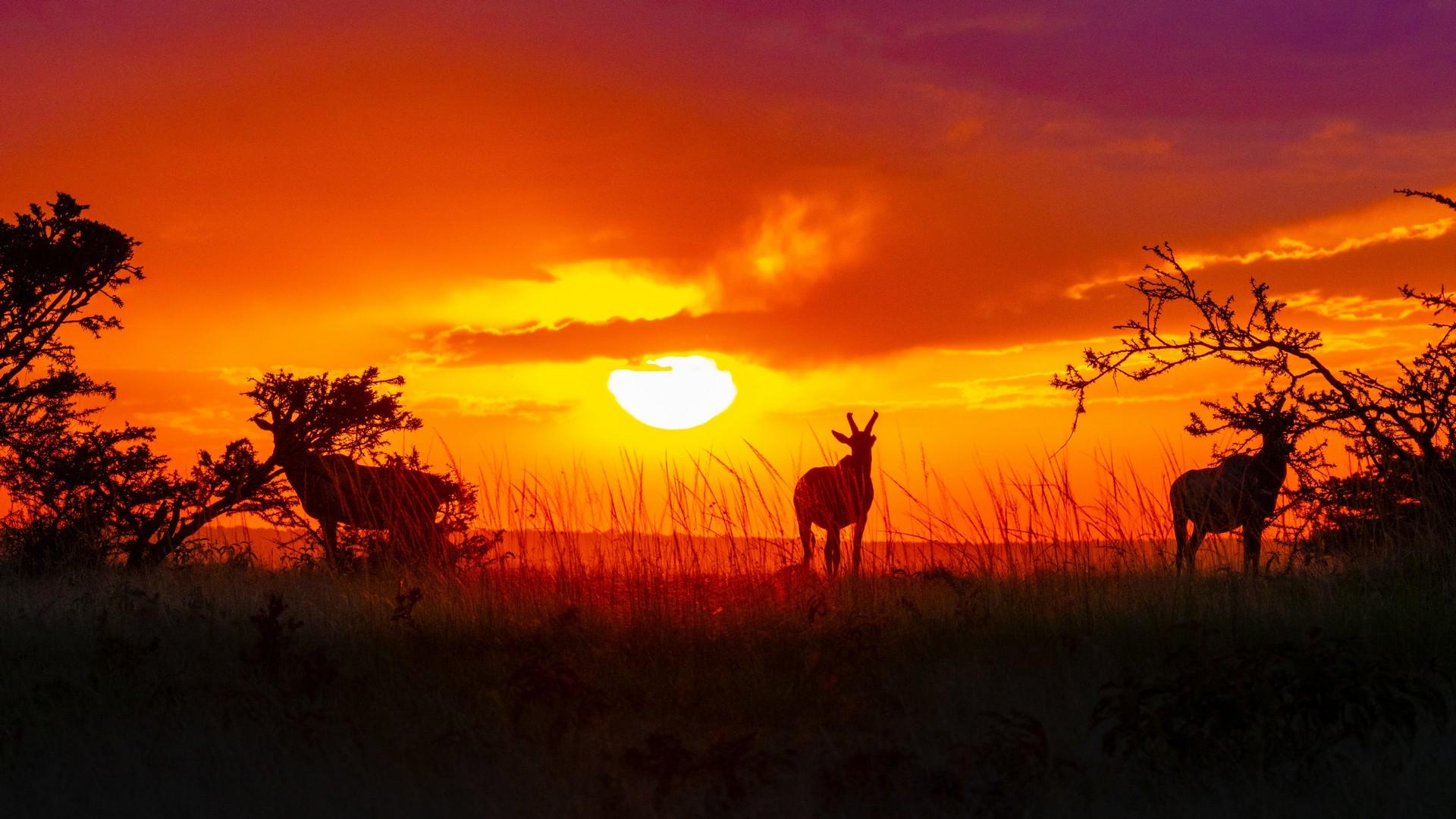If you would like to go to "black" Africa, Kenya is the ideal country. You will be impressed by its diversity. In addition to several safaris, there are national parks in the mountains, beautiful beaches and coral reefs on the Indian Ocean coast. The people are friendly and travelling on your own is not a big problem.
We arrive in Nairobi at 2am. At the airport we arrange our visas and book a taxi to our hotel in the centre. The capital of Kenya has about 3 million inhabitants and was founded in 1899. As a result, there are rather newer houses and the centre is not very historically interesting. In addition, it has a reputation as a dangerous place, so it only served as a transfer point for our travels in Kenya. The next day in Nairobi we arrange a three-day safari with one of the agencies. We choose the Masai Mara National Park on the border of Kenya and Tanzania. The price includes transport by minibus for 6 people, driver and guide, meals and two nights at the camp.
The Big Five
A large number of tourists go to Kenya for safaris. Which one you choose depends on what you want to see. Some places can be reached on foot with a guide, but most people take jeeps or minibuses and stay overnight outside the parks in campsites. We were in Kenya in January, the landscape was more arid but the vegetation was low, so we saw animals from a distance. Another good time is July, when the zebra and wildebeest migration from the neighbouring Serengeti Park takes place. The park is greener at this time, but there are more tourists.
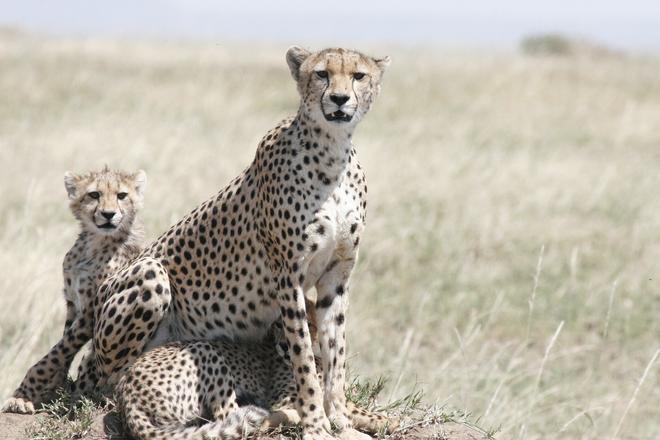
Spending three days on safari is a real treat. We were lucky enough to see the "big five" (elephant, rhino, buffalo, lion, leopard) and lots of other animals (hippos, crocodiles, zebras, giraffes). Some of the highlights included meeting a lion pride, watching cheetahs hunting and elephants with their calves. Next to our campsite was a Maasai village, home of probably the most famous tribe in Kenya. We had the opportunity to see their mud houses and they also gave us a demonstration of their dance, where the warriors of the tribe jump high into the air.
Up into the mountains
On the way back from the safari, we stop for the day in Nairobi to resupply for our 5-day trek. From the station we take a minibus called a matatu for about 4 hours to the town of Chogoria. This is the starting point for the Chogoria – Sirimon trek which passes through Mount Kenya National Park.
On the first day the trail goes through the rainforest, and after about 15 km we reach the border of the national park, the Chogoria gate (2950m). Here there are a few huts, but you can also spend the night in a tent in a meadow overlooking the Mount Kenya massif. In the morning, after paying the park entrance fee, we head towards Minto's Hut past Lake Elis. The route passes through open plains and heathland, and there is still plenty of water from the streams in this area. We spend the night by the beautiful lake and continue the gentle climb. The landscape starts to change, there are only dirt roads and rocks, but lots of beautiful lobelia and senecas of giant size. Over the Simba Col (4600m) we come to Shipton hut (3800m), where there is a camp from where climbers ascend the top of the mountain. At sunset we watch the surrounding mountains and glaciers.
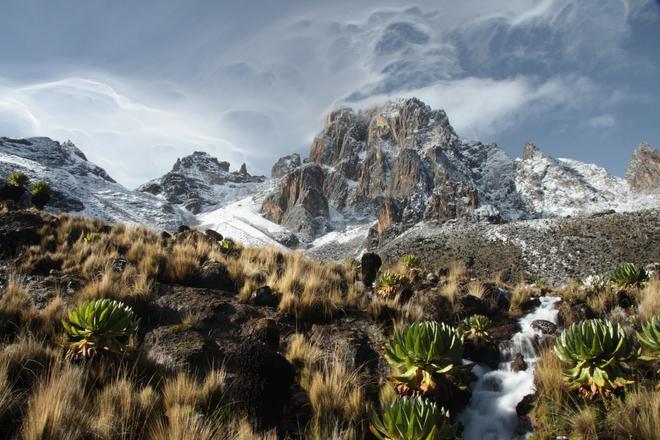
From here we descend via the Sirimon route, which leads to Old Moses Hut and the gate to the park. Over the two days we again pass through heathland, woodland, ford a couple of streams and reach the last section of the route which passes through local settlements. We only meet a few tourists the whole time and in the villages the children greet us with cheers of "jambo". Exhausted after the strenuous trek, we hitch a minibus to the Naivasha area.
Mountain bike safari
If you want to encounter giraffes and zebras while cycling, head to Lake Naivasha. There are several campsites along the southern shore of the lake. We pitch our tent at Fisherman Camp, with the curious watchful eyes of Marabou storks, catbirds and guereza. There is also a small restaurant and the possibility to rent a bike.
Freshwater Lake Naivasha lies about 100 km northwest of Nairobi. Its shores are covered with low grass and acacia trees. Several species of birds, hippos, flamingos and monkeys roam the treetops. It's worth staying at least three days to just watch the action at the lakeside campsite or explore the surrounding area on bicycles. We take a ride to a nearby village and an acacia forest full of giraffes and zebras. It's really wonderful to see the animals up close and not just sit in the car.
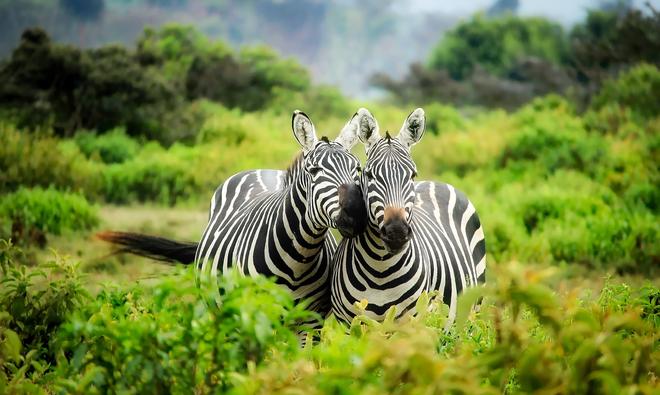
The next day we head to Hells Gate National Park. The park has the advantage of being free of beasts and is accessible by bicycle. It's a couple of kilometres from the campsite to the main gate, but the heat makes the day trip quite challenging. However, we are rewarded with sightings of baboons and cats, ostriches, zebras, giraffes and the surrounding beautifully coloured high cliffs.
Seashore
From Nairobi we take the overnight train to Mombasa. Mombasa is the second largest city in Kenya and is located on the Indian Ocean coast. Compared to Nairobi, it has a rich history and so a mix of African, Arab and Indian culture has developed here. Walking through the city we came across a mosque next to a Christian church and a little further on we admired the Indian temples.
We continued along the coast to the town of Watamu, where there are beautiful beaches and coral reefs. We spend a day relaxing and snorkeling and move by night bus to the northeastern tip of Kenya. Here is the Lamu Archipelago, which was one of the great highlights of our African trip. To get to the largest island, you have to ride a short distance across the sea. Just getting on a small boat is an adrenaline rush as locals jostle over each other, confusion ensues, the boat is overloaded and barely navigable.
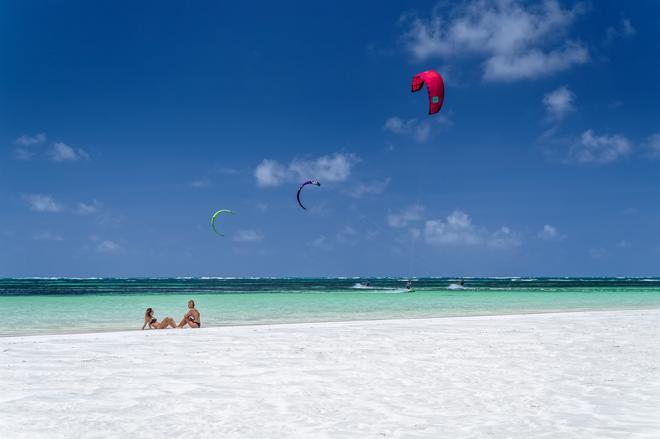
The Lamu Islands are covered in mangroves off the coast, and there are beaches and abundant underwater life. However, the local culture and architecture is the main feature. The Swahili (a mix of blacks and Arabs) live here and the town has a medieval Arab feel. It is made up of many narrow streets where donkeys with all sorts of cargo on their backs run around instead of cars. Another attraction is a ride on a small sailing boat called a "dhow". We arrange a trip with a local guide and set out to sea. From the harbour we use motor power, and on the way back to Lamu we sail downwind, feeling like we have gone back a few centuries when sailors in old sailing ships explored unknown places.
Hakuna matata
Kenya is truly an incredibly diverse country. There is a lot of interesting things to see in a relatively small area and it often feels like time has stopped. As the locals say "hakuna matata", no problem and there is plenty of time for everything.
Prices for accommodation, transport and food are cheap. National park entries (30–50 usd/day) will boost your budget. Other places to see include Amboseli National Park, Tsavo National Park, Lake Nakuru, Mt. Elgon volcano, Kakamega Forest and Lake Victoria.
